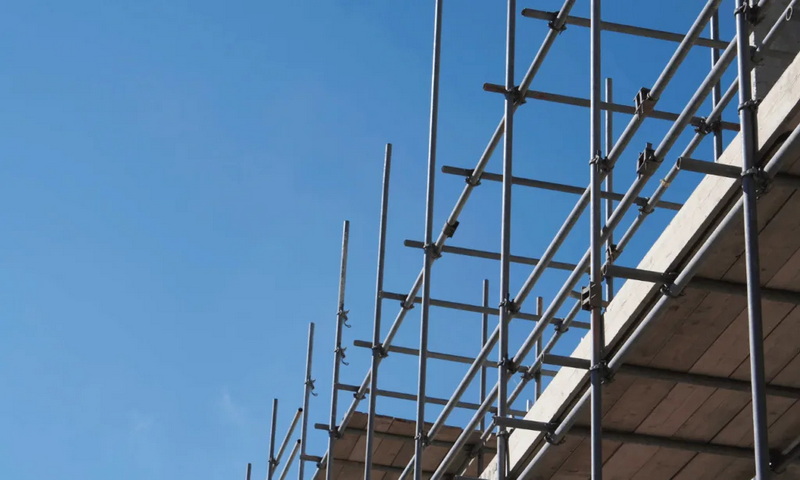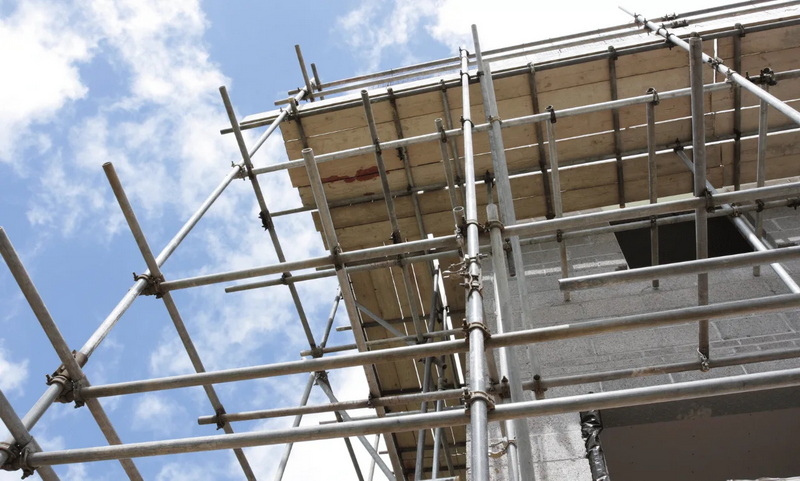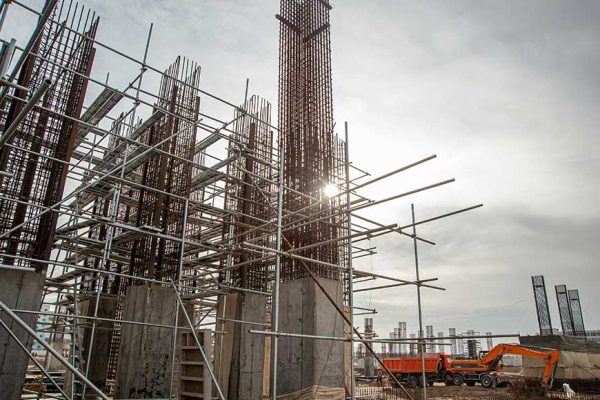Content Menu
● Understanding the Basics of a Tubular Scaffolding System
● Key Features of Tubular Scaffolding Systems
>> Versatility and Adaptability
>> Strength and Durability
>> Ease of Assembly and Disassembly
>> Cost-Effectiveness
>> Safety Features
>> Compatibility
● Components of a Tubular Scaffolding System
● Best Practices for Using Tubular Scaffolding Systems
● The Role of Couplers in Tubular Scaffolding Systems
● Integrating Technology for Enhanced Safety
● Case Studies: Successful Implementation of Tubular Scaffolding Systems
● Conclusion
● FAQ
>> 1. What are the main advantages of using a tubular scaffolding system?
>> 2. What types of couplers are used in a tubular scaffolding system?
>> 3. How often should a tubular scaffolding system be inspected?
>> 4. What is the maximum height for a tubular scaffold?
>> 5. What are the key safety considerations when working with a tubular scaffolding system?
● Citations:
A tubular scaffolding system is a temporary structure widely utilized in the construction, maintenance, and repair industries. It provides a safe, stable, and versatile platform for workers to perform tasks at various heights[3]. Unlike some pre-fabricated scaffolding types, tubular systems offer a high degree of customization and adaptability[3]. This article explores the key features that make tubular scaffolding systems a preferred choice for many construction projects.

Understanding the Basics of a Tubular Scaffolding System
The tubular scaffolding system consists primarily of metal pipes or tubes that form the scaffold framework[3]. These tubes are typically made of steel or aluminum, chosen for their strength, durability, and ability to withstand heavy loads[3]. The system is assembled by connecting these tubes using various types of couplers and clamps[3].
Key Features of Tubular Scaffolding Systems
Versatility and Adaptability
One of the most significant advantages of a tubular scaffolding system is its versatility[3][5]. The modular design allows for easy customization, enabling the scaffold to be adjusted to different heights and configurations based on the specific requirements of the construction project[3]. Irregular and circle configurations can also be achieved[5]. This adaptability makes it suitable for a wide range of applications, including:
- Construction of new buildings
- Renovation and repair work
- Maintenance of existing structures
- Scaffolding around complex architectural designs
Strength and Durability
Tubular scaffolding systems are known for their strength and durability[3]. The use of high-quality steel or aluminum ensures that the scaffold can withstand heavy loads and tough working conditions[3]. With a 4.0mm wall thickness, tubular scaffolding is a high load scaffold system[5]. This is crucial for supporting workers, equipment, and materials at height[3]. The robust construction provides a safe and stable platform, reducing the risk of accidents and injuries.
Ease of Assembly and Disassembly
Despite their strength, tubular scaffolding systems are relatively easy to assemble and disassemble[3]. The modular design and simple connection methods allow for quick erection and dismantling on construction sites[3]. This saves valuable time and labor resources, enhancing overall productivity[3]. The use of standardized components further simplifies the assembly process[5].
Cost-Effectiveness
Tubular scaffolding often proves more cost-effective than modular systems because the tubes can be cut to required lengths, allowing for different distances between elements[5]. Galvanization helps save on maintenance costs[5]. While initial costs may be comparable, the long-term benefits of durability and reduced maintenance contribute to overall cost savings.
Safety Features
Safety is a paramount concern in any construction project, and tubular scaffolding systems incorporate several features to enhance worker safety:
- Guardrails: Provide a barrier to prevent falls from the platform[1].
- Toeboards: Prevent tools and materials from falling off the platform[1].
- Bracing: Diagonal and horizontal braces provide stability and prevent the scaffold from swaying or collapsing[4].
- Secure Couplers: Ensure a strong and reliable connection between tubes[5].
Compatibility
Tubular scaffolding systems can be compatible with all types of modular systems by using scaffolding couplers and fittings[5].

Components of a Tubular Scaffolding System
The tubular scaffolding system consists of several key components:
- Tubes: The main structural elements that form the vertical and horizontal members of the scaffold[1][3].
- Couplers: Fittings that connect the tubes together, including right-angle couplers, swivel couplers, sleeve couplers, and base couplers[1].
- Base Plates: Provide a stable foundation for the scaffold, distributing the load evenly[1].
- Adjustable Base Jacks: Allow for height adjustments and ensure the scaffold is level[1].
- Guardrails: Provide fall protection[1].
- Toeboards: Prevent tools and materials from falling[1].
- Braces: Diagonal and horizontal braces provide stability[4].
- Planks or Platforms: Create the working surface[1].
Best Practices for Using Tubular Scaffolding Systems
To ensure the safe and effective use of tubular scaffolding systems, it is essential to follow best practices:
- Proper Planning: Develop a detailed scaffold design that considers the load requirements, height, and specific geometry of the structure.
- Qualified Personnel: Use only trained and qualified personnel to erect, dismantle, and inspect the scaffold.
- Regular Inspections: Conduct regular inspections to identify any damage or defects.
- Load Capacity: Be aware of the scaffold's load capacity and avoid overloading it.
- Fall Protection: Always use proper fall protection measures, such as safety harnesses and lanyards[2].
- Weather Conditions: Avoid working on scaffolds in high winds or other adverse weather conditions.
- Electrical Hazards: Be aware of overhead power lines and maintain a safe distance[2].
- Housekeeping: Keep the scaffold platform clean and free of debris to prevent tripping hazards.
- Regulatory Compliance: Ensure that the scaffolding system complies with all applicable OSHA standards and local regulations[2].
The Role of Couplers in Tubular Scaffolding Systems
Couplers are crucial components in tubular scaffolding systems, as they are responsible for connecting the tubes and providing stability to the structure[1]. There are several types of couplers, each designed for a specific purpose[1]:
- Right-Angle Couplers: Used to connect tubes at 90-degree angles, creating right angles for frames and supports[1].
- Swivel Couplers: Used to connect tubes at various angles, supporting diagonal bracing[1].
- Sleeve Couplers: Used to join scaffold tubes end-to-end, extending the length of scaffold runs[1].
- Board Retaining Couplers: Used to secure scaffolding boards in place, preventing movement of platforms[1].
- Base Plate Couplers: Provide a flat bearing surface, stabilizing scaffolds at the base[1].
Integrating Technology for Enhanced Safety
The use of technology can significantly enhance the safety and efficiency of tubular scaffolding systems. Some examples include:
- 3D Modeling: Using 3D modeling software to design and visualize the scaffold before erection.
- Load Monitoring: Implementing sensors to monitor the load on the scaffold and alert workers if the load capacity is exceeded.
- Virtual Reality Training: Providing workers with virtual reality training simulations to practice safe erection and dismantling procedures.
- Drone Inspections: Using drones to conduct inspections of the scaffold, allowing for a more thorough and efficient assessment of its condition.
Case Studies: Successful Implementation of Tubular Scaffolding Systems
To illustrate the benefits of tubular scaffolding systems, consider these case studies:
- Case Study 1: A construction company used a tubular scaffolding system to build a high-rise building in a densely populated urban area. The system's versatility allowed them to adapt to the complex geometry of the building and minimize disruption to the surrounding community.
- Case Study 2: A maintenance crew used a tubular scaffolding system to repair a bridge. The system's strength and durability allowed them to safely access the underside of the bridge and perform the necessary repairs.
- Case Study 3: A renovation team used a tubular scaffolding system to restore a historic building. The system's adaptability allowed them to work around the building's intricate architectural details without causing damage.
Conclusion
Tubular scaffolding systems are a versatile, durable, and cost-effective solution for a wide range of construction, maintenance, and repair projects[5]. Their key features, including adaptability, strength, ease of assembly, and safety, make them a preferred choice for many contractors and construction professionals[3]. By following best practices and adhering to all applicable regulations, construction companies can ensure the safe and effective use of tubular scaffolding systems, creating a productive and secure working environment for their employees[2].

FAQ
1. What are the main advantages of using a tubular scaffolding system?
The main advantages include versatility, strength, ease of assembly, cost-effectiveness, and safety[3][5]. Tubular scaffolding is also highly adaptable[3].
2. What types of couplers are used in a tubular scaffolding system?
Various types of couplers are used, including right-angle couplers, swivel couplers, sleeve couplers, and base couplers[1].
3. How often should a tubular scaffolding system be inspected?
A tubular scaffolding system should be inspected before each use and regularly throughout the project[2].
4. What is the maximum height for a tubular scaffold?
For scaffolds exceeding 125 feet in height, the design must be prepared by a qualified engineer[1].
5. What are the key safety considerations when working with a tubular scaffolding system?
Key safety considerations include proper erection, load capacity, fall protection, weather conditions, electrical hazards, and housekeeping[2].
Citations:
[1] https://scaffoldtype.com/tube-and-coupler-scaffolding/
[2] https://www.youtube.com/watch?v=RCdHJ2Dkjfg
[3] https://scaffoldtype.com/tubular-scaffolding/
[4] https://www.youtube.com/watch?v=veF4uSUtrEY
[5] https://www.wm-scaffold.com/tubular-scaffolding/
[6] https://www.youtube.com/watch?v=O4b9yXtnRZ4
[7] https://www.grinsulating.com/top-benefits-tube-and-clamp-scaffold/
[8] https://www.youtube.com/watch?v=ByJaXeuIEfc






















